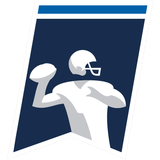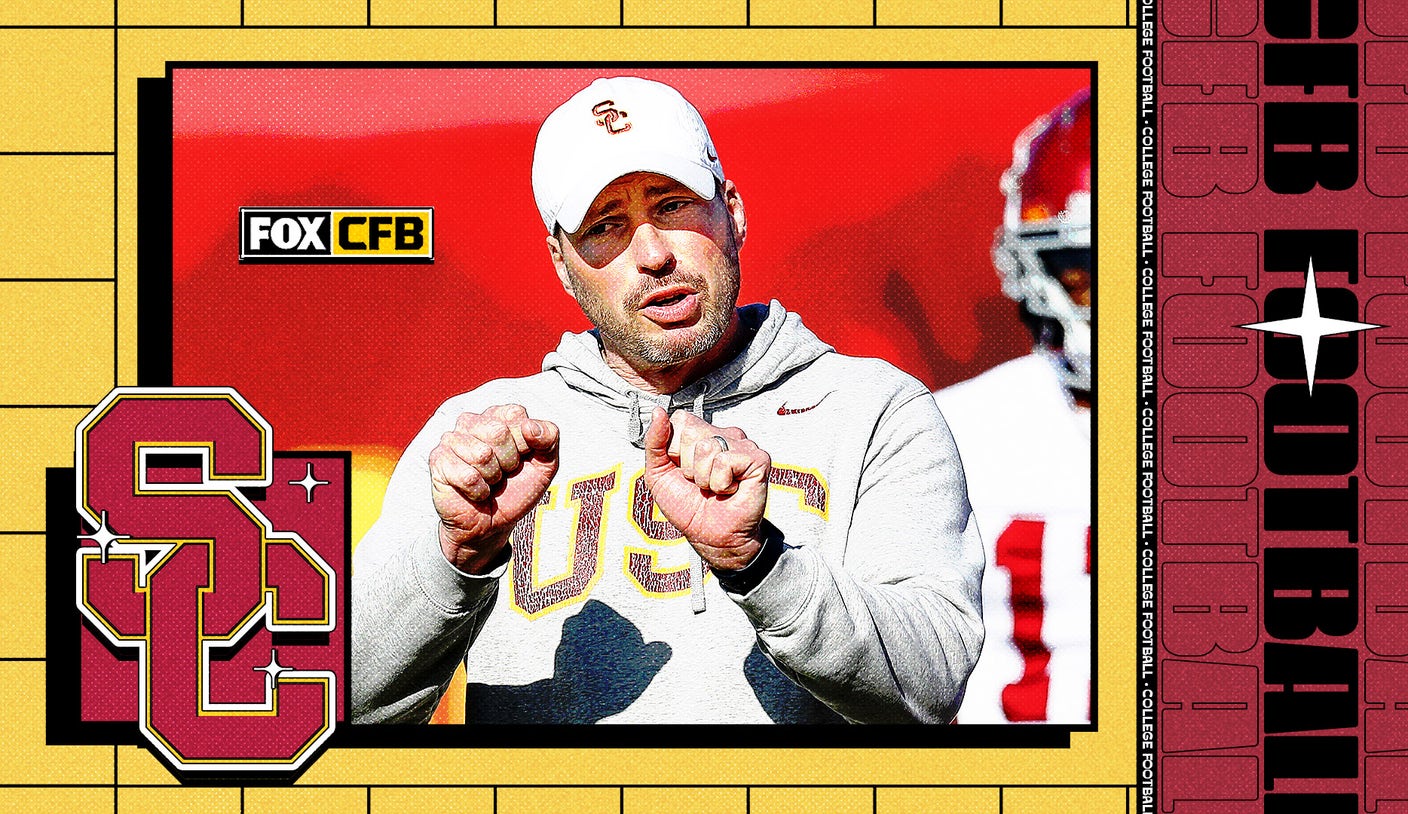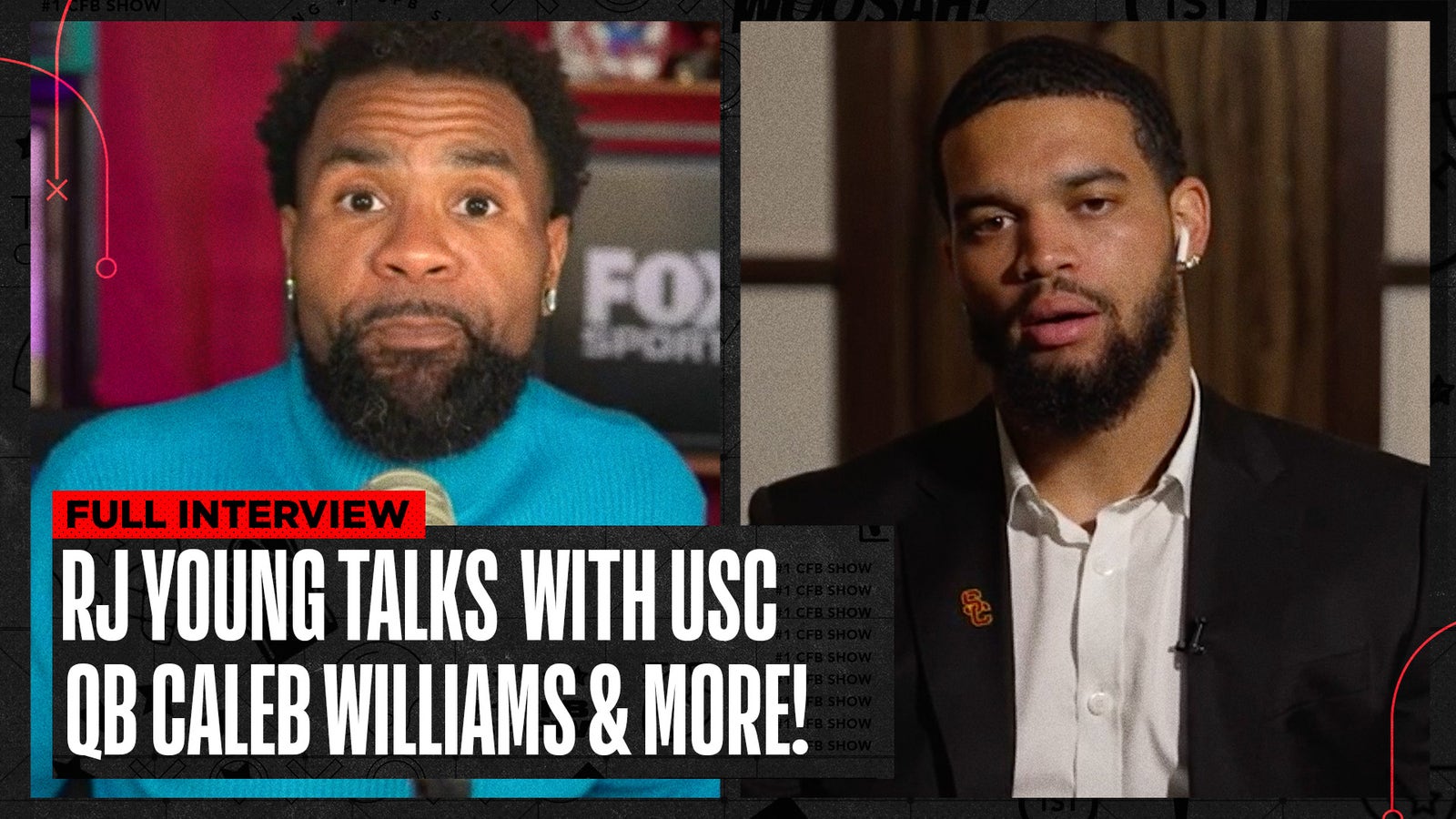[ad_1] Bryan Fischer College Football Writer LOS ANGELES — Even amid the plethora of historic buildings and architectural marvels that dot USC'
[ad_1]
LOS ANGELES — Even amid the plethora of historic buildings and architectural marvels that dot USC’s campus, few stops attract the attention of campus visitors like the trip up the concrete steps and into the double doors of Heritage Hall.
While steady air conditioning is a solid enough draw for many on any sweltering day downtown, the real attraction for the throngs of camera phones and group poses is the sea of Heisman Trophies that encircle the center of the building.
There, to the left and slightly elevated from the one inscribed with Matt Leinart’s name, lies the school’s copy of their most recent Heisman addition — the one owned by Caleb Williams.
Though the bronze bearing the name of the Trojans’ current starting quarterback draws the lion’s share of attention from those milling about the space, the lasting image for many more of last season’s team is not that of the most famous pose in college football, but rather the dejected looks from many of the signal-caller’s teammates in the aftermath of USC blowing a two-score lead to Tulane and losing the Cotton Bowl in humiliating fashion.
It was an image that underscored the enduring truth of USC’s 2022 campaign: that even having the most outstanding player in the sport was not enough to overcome the spotty defensive play that led to three losses.
As much as coaches would love to fully turn the page from such public dejection, it has instead formed the basis for the overriding question that hangs over the Trojans as they kick off fall camp this week ahead of their Week 0 opener: will the defense be good enough in 2023?
“We’re trying to play elite defense, and we look at it as: ‘how are we going to win games on defense at USC?’ We’ve always taken that approach,” says defensive coordinator Alex Grinch. “We have a great opportunity every single day playing with Caleb, and we’re going to get tested every single day (as a defense). If we need a Saturday game day to show us our deficiencies, shame on us.”
Grinch, who has seemingly earned the label ‘embattled’ ahead of his title dating back to when he first joined head coach Lincoln Riley at Oklahoma five years ago, is well aware of the pessimism and growing national narrative surrounding his side of the ball — and isn’t shying away from it. There have not been any excuses rolled out about injuries last season. Nor have there been futile attempts at trying to explain away sub-par play. There is just a stark (and even refreshing) acknowledgment that the standard wasn’t met a year ago and that it has to change.
The onus to get it done, to a degree that allows the team to reach its stated goal of a championship, falls on him.
“Twenty-one years in the business, I mean, I think you’re coaching for your job all the time,” said Grinch. “I’ve been very, very fortunate to be on the positive side a lot more Saturdays than I’ve been on the negative side.”
Still, the last two times Grinch has been on the sidelines for a game, things didn’t end up on the right side, as USC faltered from potentially reaching the College Football Playoff to an offseason full of scrutiny and intense retrospection.
While every coach in the country will have gone back over every play from the past season by the time fall camp opens, USC’s defensive staff took things a bit further this year and even went back to watch practice tape from last year — seeking to understand if missed tackles or blown coverages had roots stem from issues earlier that week. It was the first time Grinch had ever gone so granular in two decades in the business, but it allowed him to further refine things, especially when it came to striking the right balance between giving his players — most of whom are back for Year 2 in his scheme — enough of the system without overwhelming them.
As a result, the staff is happy with how things played out in the spring and has continued to harp on the word “consistency” to make such gains carry over into the upcoming campaign.
Grinch and his staff didn’t only focus on self-scouting, as new ideas flowed from dissecting and debating other college and NFL defenses. Former Texas Tech and Arizona Cardinals head coach Kliff Kingsbury, now an offensive analyst who shows up daily to the John McKay Center, has even provided a few helpful suggestions for potential tweaks.
Maybe just as important, the Trojans also poured over NFL Combine measurements to reaffirm what the next level was looking at when it came to the players themselves.
That will become readily apparent as soon as the team takes the field at the Coliseum, as personnel upgrades are the most tangible changes on the defensive side of the ball. While it’s still not quite the type of star-studded units that Pete Carroll was fielding two decades ago, the Trojans do appear noticeably improved.
All-Pac-12 defensive tackle Kyon Barrs arrived as a fifth-year veteran from Arizona, and defensive end Anthony Lucas looks the part of a former five-star after portal-ing his way West from Texas A&M. Oklahoma State transfer Mason Cobb earned such high praise from the staff and his new teammates that the linebacker represented the defense at Pac-12 Media Day in Las Vegas despite having yet to don the cardinal and gold in an actual game.
Most important of all, especially in the trenches, has been the addition of Texas native Bear Alexander. The surprisingly nimble 305-pounder was once committed to Riley and Grinch when they were at Oklahoma but spent the past season at Georgia where he recorded a sack in the national championship game just down the road at SoFi Stadium.
“It makes a big difference,” returning linebacker Eric Gentry said of the bigger bodies up front. “The guys last year did a good job, but this year I’m really expecting even more.”
That includes more of Gentry himself, who says he’s gained an inch on the officially listed height to stretch his frame to 6-foot-7. That is in addition to the 20-plus pounds of muscle he’s added this offseason, too.
“This is my 14th year coaching in college football, and I’ll tell you what, this is probably the most excited I’ve been about my room,” outside linebackers coach Roy Manning said. “They really make me earn my check — they are a group that asks questions. Who knows how this thing will shake out, but there’s legitimately four guys that are counting on being a starter in my room right now. I’m chomping at the bit, and that’s how I should be at this.”
Such optimism is ever-present with every program this time of year, neatly balancing out the building pressure that comes with the steady march to the season in August.
Yet it will be hard to see just how tangible any improvement made by the Trojans defense really is until the heart of the team’s Pac-12 schedule arrives in late October. That’s not only the result of a fairly easy early slate — two Mountain West sides followed by three rebuilding Pac-12 foes led by new coaches — but also because the group has only played itself since walking off the field at AT&T Stadium after the Cotton Bowl.
“Every defense in America has got to detox itself a little bit from their own offense,” inside linebackers coach Brian Odom remarked. “The offense has to detox itself from us a little bit as well — that’s everybody in America, too. But it probably magnifies itself a little bit more with Lincoln and Caleb (on the other side).”
As much as iron can sharpen iron in football terms, that was the case a year ago too as USC’s defense faced off against Williams in practice with regularity. They still wound up giving up nearly 30 points per game and ranked 124th in yards per play allowed.
Even worse, as their quarterback lifted his game to spectacular heights during crunch time last season, the Trojans gave up nearly 120 yards and 17 points per game in the fourth quarter during a 1-2 stretch to end the year that cost the program far more than just a CFP appearance.
However you want to contextualize scheme changes, better personnel, or providing some balance to one of the best offenses in the sport, the ultimate arbiter on improvement will still be unknown until the weather starts to cool this fall.
“We know that if we don’t play 60-minute football games, we cannot be a champion in college football,” said Grinch. “It will not happen.”
“I feel like we could — and we will — be a great defense,” a confident Barnes added, a smile disarming the seriousness with which his eyes delivered the statement. “National championship, that’s what we’re looking at. Winning the Pac-12, going to the natti and winning the natti, we’re going to do everything possible.”
It’s a prediction that would illustrate quite the turnaround and provide a fitting foil for the devastating images of heads down and hands on hips from the cardinal and gold a year ago in Texas.
Until it becomes a reality though, the one big question surrounding USC’s defense ahead of their 2023 season will continue to linger no matter how much excitement their offensive counterparts continue to produce.
Bryan Fischer is a college football writer for FOX Sports. He has been covering college athletics for nearly two decades at outlets such as NBC Sports, CBS Sports, Yahoo! Sports and NFL.com among others. Follow him on Twitter at @BryanDFischer.
COLLEGE FOOTBALL trending

Get more from College Football Follow your favorites to get information about games, news and more
[ad_2]
Source link





COMMENTS